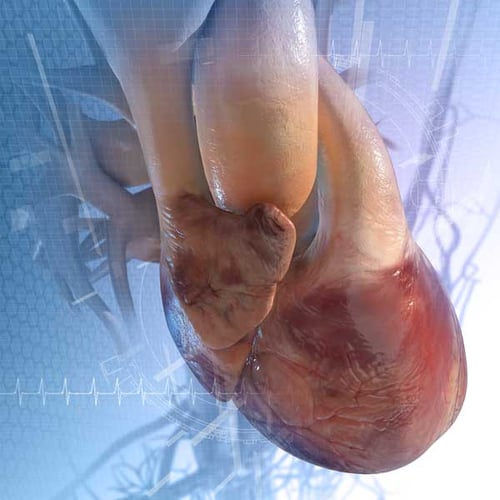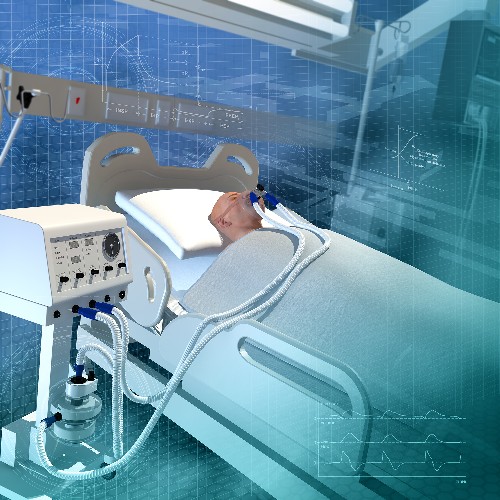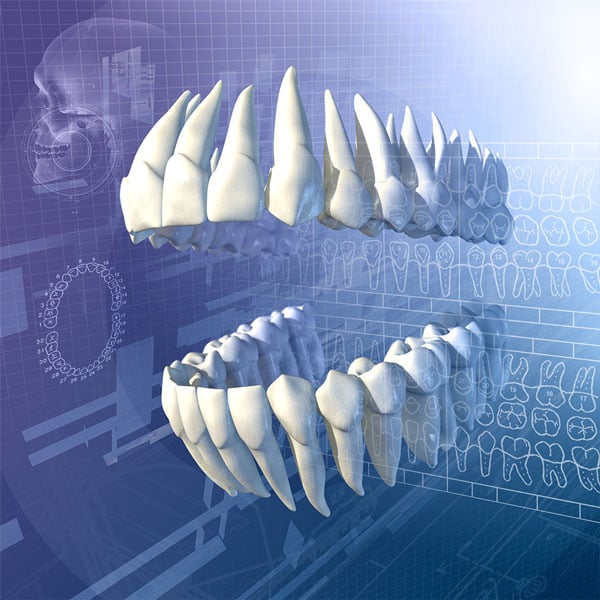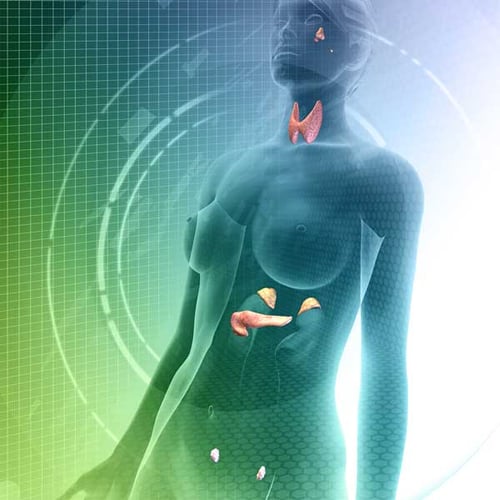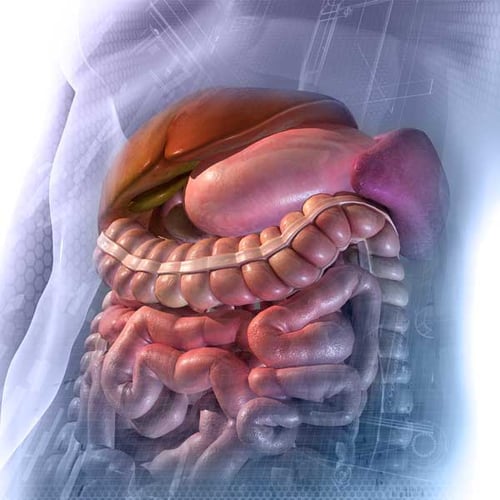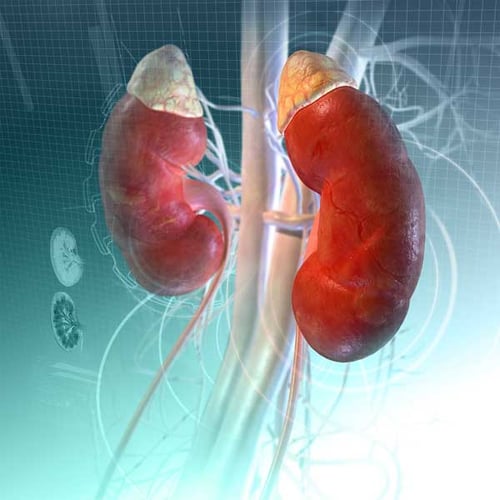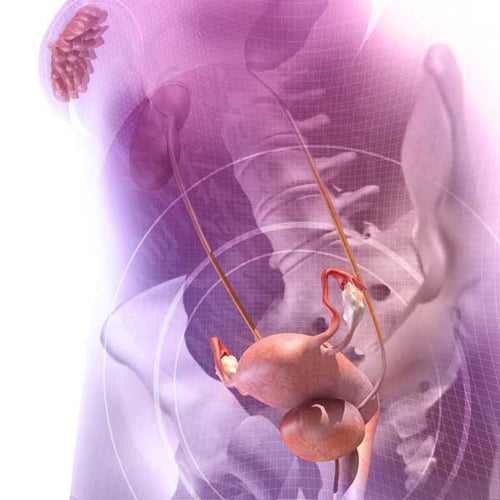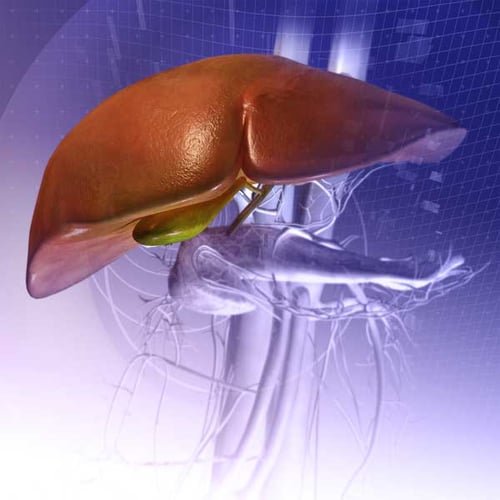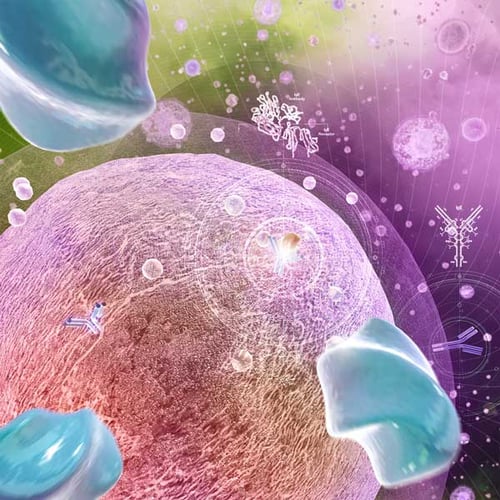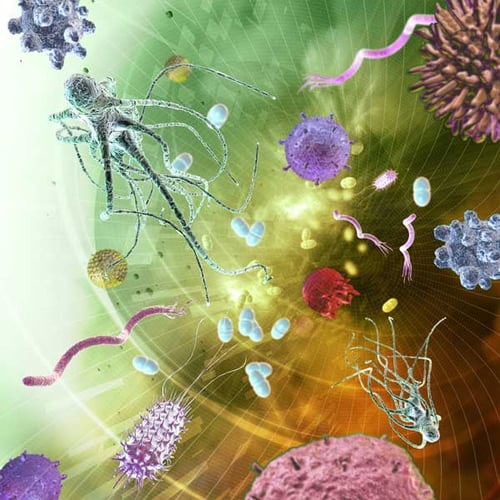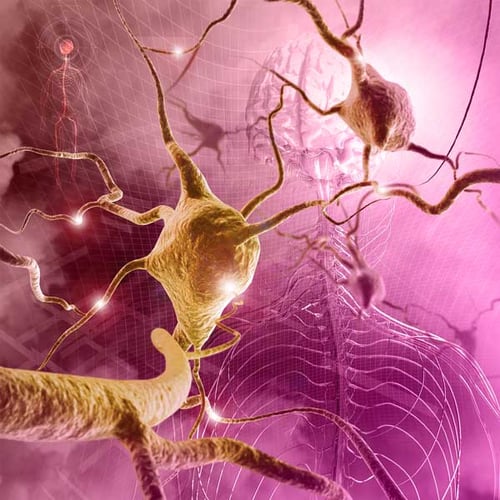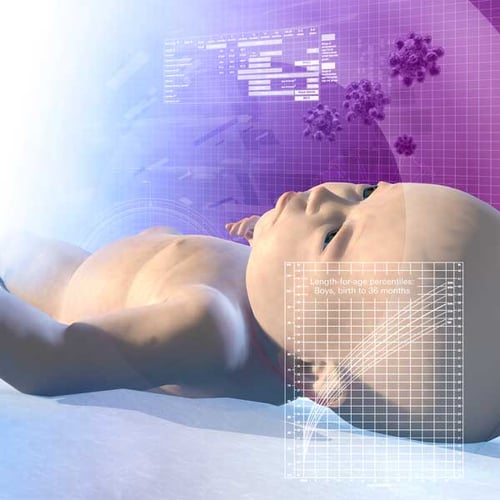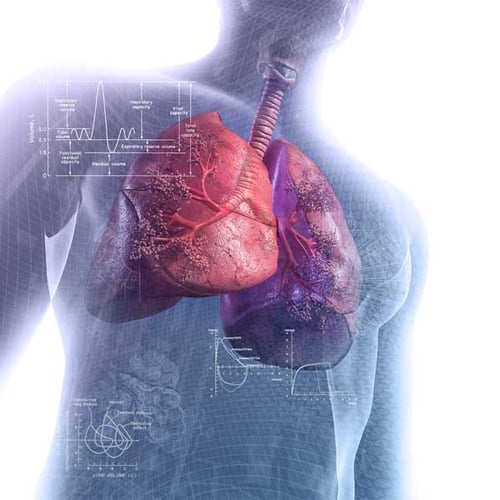- Cardiovascular DisordersClinical PharmacologyCritical Care MedicineDental DisordersDermatologic DisordersEar, Nose, and Throat DisordersEndocrine and Metabolic DisordersEye DisordersGastrointestinal DisordersGenitourinary DisordersGeriatricsGynecology and ObstetricsHematology and OncologyHepatic and Biliary DisordersImmunology; Allergic DisordersInfectious DiseasesInjuries; PoisoningMusculoskeletal and Connective Tissue DisordersNeurologic DisordersNutritional DisordersPediatricsPsychiatric DisordersPulmonary DisordersSpecial Subjects
- Abdominal Aortic Aneurysm Size and Rupture Risk*
- Abdominal Aortic Aneurysm Size and Rupture Risk*
- Alpha Adrenergic Modifiers for Hypertension
- Antiarrhythmic Drugs (Vaughan Williams Classification)
- Antihypertensives for Patients With Comorbidities
- Canadian Cardiovascular Society Classification System for Angina Pectoris
- Cardiac Output Equations
- Carotid Pulse Amplitude and Associated Disorders
- Causes of Acute Pericarditis
- Causes of Cor Pulmonale
- Causes of Dilated Cardiomyopathy
- Causes of Elevated Troponin Levels
- Causes of Heart Failure
- Causes of Myocarditis
- Causes of Orthostatic Hypotension
- Causes of Secondary Raynaud Phenomenon
- CHA(2)DS(2)-VASc Score
- Classification of Blood Pressure in Adults*
- Clinical Classification of Chronic Venous Insufficiency
- Clinical Criteria for Infective Endocarditis According to the 2023 Duke-International Society for Cardiovascular Infectious Disease
- Clinical Manifestations of Atherosclerosis
- Conditions Contributing to Aortic Dissection
- Contraindications to Fibrinolytic Therapy
- Criteria for ECG Diagnosis of Left Ventricular Hypertrophy
- Definitions of Infective Endocarditis According to the 2023 Duke-International Society for Cardiovascular Infectious Disease Criteria
- Diagnosis and Treatment of Cardiomyopathies
- Direct Oral Anticoagulants for Treatment of Venous Thromboembolism
- Direct Vasodilators for Hypertension
- Distinguishing the Murmurs of Tricuspid Stenosis and Mitral Stenosis
- Etiology of Murmurs by Timing
- Examples of Pacemaker Codes*
- Features Distinguishing Athlete's Heart From Cardiomyopathy
- Fibrinolytic Therapy for STEMI
- Functional Evaluation After Myocardial Infarction
- Functional Evaluation After Myocardial Infarction
- Grading of Mitral Regurgitation
- HAS-BLED Tool for Predicting Risk of Bleeding in Patients With Atrial Fibrillation
- Indications for Implantable Cardioverter-Defibrillators in Ventricular Tachycardia and Ventricular Fibrillation
- Indications for Permanent Pacemakers
- Initial Approach to Management of High Blood Pressure
- Initial Choice of Antihypertensive Medication Class
- Interpretation of Abnormal ECGs
- IV Fibrinolytic Therapies
- Killip Classification of Acute Myocardial Infarction*
- Location of Thrills and Associated Disorder
- Maneuvers That Aid in Diagnosis of Murmurs
- Manifestations of Heart Transplant Rejection by Category*
- Mechanisms of Tricuspid Regurgitation
- Medications for Coronary Artery Disease*
- Mortality Risk at 30 Days in STEMI
- New York Heart Association (NYHA) Functional Classification of Heart Failure
- Normal Values for Cardiac Index and Related Measurements
- Oral Angiotensin-Converting Enzyme (ACE) Inhibitors and Angiotensin II Receptor Blockers for Hypertension
- Oral Beta-Blockers for Hypertension
- Oral Calcium Channel Blockers for Hypertension
- Oral Diuretics for Hypertension
- Parenteral Medications for Hypertensive Emergencies
- Probability of Deep Venous Thrombosis Based on Clinical Factors
- Procedures Requiring Antimicrobial Endocarditis Prophylaxis in Patients at High Risk for Endocarditis
- Risk Factors for Atherosclerosis
- Risk of Adverse Events* at 14 Days in Unstable Angina or NSTEMI
- Risk of Deep Venous Thrombosis and Pulmonary Embolism in Surgical Patients
- Schwartz Score for Long QT Syndrome (LQTS)*
- Some Antibiotic Regimens for Endocarditis in the United States*
- Some Causes of Chest Pain
- Some Causes of Edema
- Some Causes of Lymphadenopathy
- Some Causes of Nontraumatic Limb Pain
- Some Causes of Restrictive Cardiomyopathy
- Some Causes of Sudden Cardiovascular Death in Young Athletes
- Some Causes of Syncope
- Some Infectious Causes and Features of Sore Throat
- Some Medications That Cause Syncope
- Some Treatments for Arrhythmias
- Suggestive Historical Findings in Patients With Palpitations
- Systolic Heart Murmur Intensity
- Technetium-99m (Tc-99) Myocardial Perfusion Markers
- Tests for Assessing Cardiac Anatomy and Function
- Types of Cardiac Tumors
- Types of Severe Aortic Stenosis
- Typical Echocardiographic Findings in Different Types of Mitral Regurgitation
- Causes of Nonadherence
- Common Substances That Interact With Cytochrome P-450 Enzymes
- Examples of Pharmacogenetic Variations
- Formulas Defining Basic Pharmacokinetic Parameters
- Preventable Causes of Drug-Related Problems
- Some Medications With Potentially Serious Drug-Drug Interactions*
- Some Types of Physiologic and Drug-Receptor Proteins
- Acute Physiologic Assessment and Chronic Health Evaluation (APACHE) II Scoring System*
- Berlin Definition of ARDS
- Cerebral Performance Category Scale (Adult)*
- Complications Associated With Central Venous Catheters
- Confusion Assessment Method (CAM) for Diagnosing Delirium*
- CPR Techniques for Health Care Professionals
- Guide to Pediatric Resuscitation—Mechanical Measures
- Hypovolemic Shock Caused by Body Fluid Loss (Nonhemorrhagic)
- Initial Ventilator Management in ARDS
- Inotropic and Vasoactive Catecholamines
- Mechanisms of Cardiogenic and Obstructive Shock
- Medications Commonly Used for Resuscitation*
- Normal Pressures in the Heart and Great Vessels
- Normal Values for Cardiac Index and Related Measurements
- Pediatric Cerebral Performance Category Scale*
- Potential Indications for Pulmonary Artery Catheterization
- Richmond Agitation-Sedation Scale
- Riker Sedation-Agitation Scale
- Sedative and Analgesic Medications for Induction of Intubation
- Sequential Organ Failure Assessment (SOFA) Score
- Situations Requiring Airway Control
- Some Causes of Agitation or Confusion in Critical Care Patients
- Some Causes of Hypoxia
- Some Causes of Oliguria
- The Ramsay Sedation Scale
- Characteristics of Pain in Toothache
- Oral Findings in Systemic Disorders
- Some Causes of Halitosis
- Some Causes of Stomatitis
- Some Causes of Toothache
- Some Causes of Xerostomia
- Some Conditions That Mimic Temporomandibular Disorders
- Some Disorders of the Oral Region by Predominant Site of Involvement
- Some Oral Symptoms and Possible Causes
- Tooth-Whitening Procedures
- Causes of Allergic Contact Dermatitis
- Causes of Hypertrichosis
- Characteristics of Atypical vs Typical Nevi
- Classification of Acne Severity
- Clinical and Genetic Features of Some Inherited Ichthyoses
- Common Allergens Used in Patch Testing
- Diagnostic Clinical Features in Atopic Dermatitis*
- Differentiating Cellulitis and Deep Venous Thrombosis
- Differentiating Staphylococcal Scalded Skin Syndrome (SSSS) and Toxic Epidermal Necrolysis (TEN)
- Disorders and Medications Associated with Acute Febrile Neutrophilic Dermatosis
- Distinguishing Bullous Pemphigoid From Pemphigus Vulgaris
- Fitzpatrick Skin Type Classification
- Hyperpigmentation Effects of Some Medications and Heavy Metals
- Initial Treatment Options for Lice
- Interpreting Findings in Hirsutism
- Interpreting Physical Findings in Alopecia
- Medications Used to Treat Acne
- Options for Pressure Injury Dressings
- Options for Support Surfaces
- Options for Treatment of Superficial Fungal Infections*
- Relative Potency of Selected Topical Corticosteroids
- Severity-of-Illness Score for Toxic Epidermal Necrolysis (SCORTEN)
- Some Causes of Alopecia
- Some Causes of Generalized Sweating
- Some Causes of Hirsutism
- Some Causes of Itching
- Some Causes of Urticaria
- Some Features of the Major Epidermolysis Bullosa Types
- Some Medications or Substances That Cause Cutaneous Photosensitivity
- Some Therapeutic Approaches to Itching
- Staging of Localized Melanoma Based on Thickness and Ulceration
- Subtypes of Psoriasis
- The Norton Scale for Predicting Pressure Ulcer Risk*
- Treatment Options for Scabies
- Types and Phenotypes of Oculocutaneous Albinism (OCA)
- Types of Drug Reactions and Typical Causative Agents
- Wart Variants and Other HPV-Related Lesions
- Antibiotics for Otitis Media
- Congenital Causes of Hearing Loss*
- Differences Between Sensory and Neural Hearing Losses
- Differentiating Epiglottitis From Croup
- Differentiating Vocal Polyps, Nodules, and Granulomas
- Guidelines for Using Antibiotics in Children With Acute Otitis Media*
- Head Impulse, Nystagmus, Test of Skew Testing
- Pathologic Staging of HPV-Associated Oropharyngeal Cancer*
- Pathologic Staging of Non-HPV–Associated Oropharyngeal Cancer*
- Selected Causes of Dizziness and Vertigo
- Some Causes of Acquired Hearing Loss
- Some Causes of Anosmia
- Some Causes of Epistaxis
- Some Causes of Nasal Congestion and Rhinorrhea
- Some Causes of Neck Mass
- Some Causes of Otalgia
- Some Causes of Otorrhea
- Some Causes of Sudden Hearing Loss
- Some Causes of Tinnitus
- Some Infectious Causes and Features of Sore Throat
- Sound Levels
- Staging of Lip and Oral Cancer
- Staging of Nasopharyngeal Cancer
- The Professional Voice
- Approximate Sodium Content of Common Beverages
- Causes of Hyperprolactinemia
- Causes of Hypopituitarism
- Causes of Metabolic Acidosis
- Causes of Metabolic Alkalosis
- Characteristics of Injectable Non-Insulin Antihyperglycemic Medications
- Characteristics of Oral Antihyperglycemics
- Characteristics of Polyglandular Deficiency Syndromes
- Cholesterol Levels and Cardiovascular Risk
- Clinical Consequences of Acid-Base Disorders
- Common Causes of Polyuria
- Common Causes of Volume Depletion
- Composition of Body Fluids
- Conditions Associated With Multiple Endocrine Neoplasia Syndromes
- Confirmatory Serum Testing for Addison Disease
- Confirmatory Serum Testing for Secondary Adrenal Insufficiency
- Diagnostic Criteria for Diabetes Mellitus and Impaired Glucose Regulation*
- Diagnostic Tests in Cushing Syndrome
- Differentiation of Generalized Hypopituitarism from Other Selected Disorders
- Disorders Associated With Syndrome of Inappropriate Antidiuretic Hormone Secretion
- Distinguishing Primary and Secondary Aldosteronism
- Factors Contributing to Hyperkalemia
- General Characteristics of Types 1 and 2 Diabetes Mellitus
- Genetic (Primary) Dyslipidemias
- Hypothalamic Neurohormones
- Laboratory and Clinical Findings in Some Disorders Causing Hypercalcemia
- Major Apoproteins and Enzymes Important to Lipid Metabolism
- Major Features of the Two Most Common Hepatic Porphyrias
- Non-Statin Lipid–Lowering Drugs*
- Onset, Peak, and Duration of Action of Human Insulin Preparations*
- Pancreatic Endocrine Tumors
- Primary Changes and Compensations in Simple Acid-Base Disorders
- Principal Causes of Hypercalcemia
- Principal Causes of Hypernatremia
- Principal Causes of Hypomagnesemia
- Principal Causes of Hyponatremia
- Results of Thyroid Function Tests in Various Clinical Situations
- Screening and Confirmatory Tests for Porphyrias
- Some Less Common Porphyrias
- Statins For ASCVD Prevention
- Substrates and Enzymes of the Heme Biosynthetic Pathway and the Diseases Associated With Their Deficiency or Gain of Function
- Test Results That Suggest Addison Disease
- Treatment of Thyroid Storm
- Typical Laboratory Test Results in Some Disorders Causing Hypocalcemia
- Water Deprivation Test Results
- Angle-Closure Glaucoma: Classification Based on Mechanisms of Outflow Obstruction*
- Causes of Corneal Ulcers
- Developmental Abnormalities of the Anterior Chamber Angle Causing Glaucoma: Classification Based on Mechanisms of Outflow Obstruction*
- Differentiating Features in Acute Conjunctivitis
- Differentiating Features in Acute Conjunctivitis
- Differentiating Features in Acute Conjunctivitis
- Differentiating Features in Acute Conjunctivitis
- Infectious Causes of Uveitis
- Interpretation of Retinal Findings
- Interpretation of Some Red Flag Eye Findings
- Medications Used to Treat Glaucoma
- Open-Angle Glaucoma: Classification Based on Mechanisms of Outflow Obstruction*
- Some Causes of Acute Vision Loss
- Some Causes of Binocular Diplopia
- Some Causes of Blurred Vision
- Some Causes of Eye Pain
- Some Causes of Eyelid Swelling
- Some Causes of Floaters
- Some Causes of Proptosis
- Some Causes of Red Eye
- Some Causes of Tearing
- Some Common Causes of Anisocoria
- Types of Visual Field Defects
- Agents Used to Treat Constipation
- Causes of Acute Mesenteric Ischemia
- Causes of Chronic Pancreatitis
- Causes of Constipation
- Causes of Intestinal Obstruction
- Causes of Malabsorption
- Classification of Internal Hemorrhoids
- Colorectal Cancer Screening Guidelines from the American College of Gastroenterology (ACG) and the U.S. Preventive Services Task Force (USPSTF)
- Common Causes of Gastrointestinal (GI) Bleeding
- Dietary Factors That May Worsen Diarrhea
- Differentiating Crohn Disease and Ulcerative Colitis
- Extra-Abdominal Causes of Abdominal Pain
- Foods Often Affecting Gastrointestinal Function
- History in Patients with Acute Abdominal Pain
- Intra-Abdominal Abscesses
- Modified Marshall Organ Failure Score
- Physiologic Causes of Chronic Abdominal Pain
- Small-Bowel Mucosal Histology in Certain Malabsorptive Disorders
- Some Causes of Acute Pancreatitis
- Some Causes of Diarrhea*
- Some Causes of Dyspepsia
- Some Causes of Esophageal Dysphagia
- Some Causes of Gas-Related Symptoms
- Some Causes of Gastrointestinal Tract Perforation
- Some Causes of Intractable Hiccups
- Some Causes of Nausea and Vomiting
- Some Causes of Oropharyngeal Dysphagia
- Some Causes of Pruritus Ani
- Some Helpful Findings in Dysphagia
- Some Medications for Vomiting
- Some Oral Medications for Dyspepsia
- Staging Colorectal Cancer*
- Staging Esophageal Adenocarcinoma*
- Symptoms of Malabsorption
- Treatment for Infectious Gastroenteritis*
- Adverse Effects of Exogenous Anabolic Androgenic Steroids
- AJCC/TNM* Staging of Bladder Cancer
- AJCC/TNM* Staging of Prostate Cancer*
- AJCC/TNM* Staging of Renal Cell Carcinoma
- AJCC/TNM* Staging of Testicular Cancer
- American Urological Association Symptom Score for Benign Prostatic Hyperplasia
- Autosomal Dominant Tubulointerstitial Kidney Disease: Gene-based Classification
- Causes of Acute Kidney Injury Based on Laboratory Findings
- Causes of Acute Tubulointerstitial Nephritis
- Causes of Chronic Tubulointerstitial Nephritis
- Causes of Cutaneous Penile Lesions
- Causes of Established Incontinence
- Causes of Glomerulonephritis
- Causes of Hypogonadism*
- Causes of Nephrotic Syndrome
- Causes of Obstructive Uropathy
- Causes of Penile Inflammation
- Causes of Proteinuria
- Causes of Renal Cortical Necrosis
- Causes of Transient Incontinence
- Causes Of Urine Color Changes
- Classification of Lupus Nephritis
- Classification of Rapidly Progressive Glomerulonephritis Based on Immunofluorescence Microscopy
- Common Medication Causes of Gynecomastia*
- Common Types of Urinary Crystals
- Commonly Used Drugs That Can Cause Erectile Dysfunction
- Complications of Nephrotic Syndrome
- Complications of Renal Replacement Therapy
- Composition of Urinary Calculi
- Distinguishing Acute Kidney Injury From Chronic Kidney Disease
- Glomerular Disorders by Age and Manifestations
- Imaging Tests for Diagnosis of Renal Artery Stenosis or Occlusion
- Indications and Contraindications to Common Renal Replacement Therapies
- Interpretation of Some Findings in Gynecomastia
- Laboratory Findings Distinguishing Acute Tubular Necrosis From Prerenal Azotemia
- Major Causes of Acute Kidney Injury
- Major Causes of Chronic Kidney Disease
- Major Groups of Cystic Nephropathies
- Medications That Cause Crystal Formation
- Medications Used to Treat Incontinence
- NIH Consensus Classification System for Prostatitis
- Oral Phosphodiesterase Type 5 Inhibitors for Erectile Dysfunction
- Serum Complement Profiles in Membranoproliferative Glomerulonephritis
- Some Causes of a Painless Scrotal Mass
- Some Causes of Dysuria
- Some Causes of Gynecomastia
- Some Causes of Polyuria
- Some Causes of Priapism
- Some Causes of Scrotal Pain
- Some Causes of Urinary Frequency
- Some Common Specific Causes of Hematuria
- Some Features of Different Types of Renal Tubular Acidosis*
- Staging Criteria for Acute Kidney Injury (KDIGO 2012)*
- TNM and Serum Marker Definitions for Testicular Cancer*
- TNM Definitions for Bladder Cancer*
- TNM Definitions for Prostate Cancer*
- TNM Definitions for Renal Cell Carcinoma*
- Urinary Casts
- Urinary Diagnostic Indices in Prerenal Acute Kidney Injury and Acute Tubular Injury
- A Geriatric Assessment Instrument
- Clues to Disorders in Older Patients
- ELDERSS: Some Important Issues for Hospitalized Older Adults
- Geriatric Depression Scale (Short Form)
- Home Assessment Checklist for Hazards That Increase Risk of Falling
- Lawton Instrumental Activities of Daily Living Scale
- Modified Katz Activities of Daily Living (ADL) Scale
- Nursing Homes at a Glance
- Performance-Oriented Assessment of Mobility
- Preventable Causes of Drug-Related Problems
- Risk Factors for Elder Abuse
- Selected Physiologic Age-Related Changes
- Services That May Be Provided in Home Health Care
- Signs of Elder Abuse
- Some Causes of Gait Dysfunction
- Some Disorders More Common Among Older Adults
- Some Disorders That Contribute to Risk of Falls
- Some Medications That Impact the Risk of Falls and Injuries
- Strategies for Avoiding Nursing Home Placement
- Treatment of Gait Disorders
- Various Duties of Pharmacists
- Anatomic Staging of Breast Cancer*
- Antibiotic Regimens for Treatment of Intraamniotic Infection
- Bethesda Classification of Cervical Cytology*
- Causes of Impaired Spermatogenesis
- Causes of Vaginal Bleeding in Children
- Cervical Cancer Screening
- Characteristic Symptoms and Signs in Spontaneous Abortions
- Characteristics of Common Anemias
- Children Who Witness Domestic Violence
- Classification of Abortion
- Common Types of Vaginitis
- Comparison of Common Contraceptive Methods
- Comparison of Fertility Awareness‒Based Methods of Contraception
- Comparison of Intrauterine Devices
- Components of the Sexual History for Assessment of Female Sexual Dysfunction
- Etiologies of Primary Ovarian Insufficiency
- Fetal Heart Rate Monitoring Definitions
- FIGO Anatomic Staging of Gestational Trophoblastic Neoplasia
- FIGO Staging of Cervical Carcinoma
- FIGO Staging of Uterine Corpus Carcinoma and Carcinosarcoma
- FIGO Surgical Staging of Ovarian, Fallopian Tube, and Peritoneal Cancer
- FIGO Surgical Staging of Uterine Sarcoma: Adenosarcoma
- FIGO Surgical Staging of Uterine Sarcoma: Leiomyosarcoma and Endometrial Stromal Sarcoma
- FIGO Vaginal Cancer by Stage
- Glucose Thresholds for Gestational Diabetes Using a 3-hour Oral Glucose Tolerance Test*
- Guidelines for Managing Prelabor Rupture of Membranes Based on ACOG's Recommendations
- Guidelines for Weight Gain During Pregnancy*
- History or Findings Suggesting Causes of Amenorrhea
- Indications for Fetal Genetic Diagnostic Tests
- Management of Gestational Diabetes During Pregnancy
- Management of Type 1 Diabetes Mellitus* During Pregnancy
- Management of Type 2 Diabetes Mellitus* During Pregnancy
- Maternal Age and Risk of Having a Baby With a Chromosomal Abnormality*
- Maternal Mortality Ratios in Selected Countries, 2020
- Normal Menstrual Parameters*
- Normal Postpartum Changes
- PALM-COEIN* Uterine Leiomyoma (Fibroid) Subclassification System
- Postoperative Treatment of Ovarian Cancer by Stage and Type
- Preconception or Prenatal Genetic Testing of Potential Parents
- Preferred Breast Cancer Adjuvant Systemic Therapy*
- Recommendations for Breast Cancer Screening Mammography in Women With Average Risk
- Recommendations for Breast Cancer Screening Mammography in Women With Average Risk
- Regimens for Treatment of Pelvic Inflammatory Disease*
- Relevant Physical Examination Findings in a Pregnant Patient With Vomiting
- Risk of Being Diagnosed With Invasive Breast Cancer
- Routine Prenatal Evaluation Schedule
- Safety of Selected Drugs in Pregnancy
- Sedlis Criteria for External Pelvic Radiation After Radical Hysterectomy*
- Semen Analysis
- Some Causes of Amenorrhea due to Structural Reproductive Tract Abnormalities
- Some Causes of and Risk Factors for Stillbirth
- Some Causes of Bleeding During Late Pregnancy
- Some Causes of Edema During Late Pregnancy
- Some Causes of Nausea and Vomiting During Early Pregnancy
- Some Causes of Nipple Discharge
- Some Causes of Pelvic Pain During Early Pregnancy
- Some Causes of Pelvic Pain During Early Pregnancy
- Some Causes of Uterine Bleeding in Nonpregnant Adult Women
- Some Causes of Vaginal Bleeding During Early Pregnancy
- Some Causes of Vaginal Bleeding During Early Pregnancy
- Some Causes of Vulvovaginal Pruritus and Vaginal Discharge in Children
- Some Causes of Vulvovaginal Pruritus or Vaginal Discharge
- Some Clues to Diagnosis of Pelvic Pain
- Some Etiologies of Ovulatory Dysfunction
- Some Findings That Suggest Preeclampsia
- Some Gynecologic Causes of Pelvic Pain
- Some Medications for Candidal Vaginitis
- Some Physical Factors Contributing to Female Sexual Dysfunction
- Some Risk Factors for Major Causes of Bleeding During Late Pregnancy
- Stages of Endometriosis
- Stages of Menopause
- Suggested Medications for Nausea and Vomiting During Early Pregnancy
- Threshold Values for Diagnosing Overt Diabetes in Pregnancy
- Treatment by Type of Breast Cancer
- Types of Ovarian Cancers
- Typical Examination for Alleged Sexual Assault
- Vulvar Cancer by Stage
- WHO Scoring System in Metastatic Gestational Trophoblastic Disease*
- 5-Year Survival for Selected Types of Cancer
- Abnormalities in Patients With Hypereosinophilic Syndrome
- Acquired Causes of Thromboembolism
- Acquired Causes of Thromboembolism
- Cancer-Associated Viruses
- Causes of Lymphocytopenia
- Characteristics of Common Anemias
- Classification of Anemia by Cause
- Classification of Myeloproliferative Neoplasms
- Classification of Neutropenias
- Classification of Plasma Cell Disorders
- Classification of Thrombocytopenia
- Clinical Staging of Chronic Lymphocytic Leukemia*
- Clonal Hypereosinophilic Syndromes
- Common Causes of Splenomegaly
- Common Chemical Carcinogens
- Common Cytogenetic Abnormalities in Acute Myeloid Leukemia
- Common Cytogenetic Abnormalities in ALL
- Common Manifestations of Hereditary Hemochromatosis
- Comparison of Hodgkin Lymphoma and Non-Hodgkin Lymphoma
- Components of Blood Coagulation Reactions
- Conditions Associated With Myelofibrosis
- Defining Response to Cancer Treatment
- Diagnosis of Hereditary Hemochromatosis
- Differential Diagnosis of Microcytic Anemia Due to Decreased Red Blood Cell Production
- Erythropoietin and Darbepoetin as Abused Substances
- Findings at Diagnosis in the Most Common Leukemias
- Hemolytic Anemias
- Histiocytic Disorders
- Histopathologic Subtypes of Hodgkin Lymphoma (WHO Classification)
- Hodgkin Lymphoma Posttreatment Surveillance
- Important Disorders and Treatments Associated With Eosinophilia
- Indications for Splenectomy in Hypersplenism
- Infectious Disease Transmission Testing
- Laboratory Tests of Hemostasis by Phase
- Lugano Staging of Hodgkin Lymphoma and Non-Hodgkin Lymphoma
- Medications That Can Cause Warm Antibody Hemolytic Anemia
- Peripheral Blood Findings in Thrombocytopenic Disorders
- Platelet Count and Bleeding Risk
- Prognosis of Acute Myeloid Leukemia Based on Some Common Cytogenetic Abnormalities
- Red Blood Cell Morphologic Changes in Hemolytic Anemias
- Results of Aggregation Tests in Inherited Platelet Function Disorders
- Revised International Staging System for Multiple Myeloma
- Screening Laboratory Test Results and Treatment of Inherited Blood Coagulation Deficiency*
- Screening Procedures in Average-Risk* Asymptomatic People as Recommended by the American Cancer Society (ACS), U. S. Preventive Services Task Force (USPSTF), and the American College of Physicians (ACP)†
- Some Causes of Excessive Bleeding
- Some Reasons for Blood Donation Deferral or Denial*
- Typical Normal Serum Values for Iron, Iron-Binding Capacity, Ferritin, and Transferrin Saturation
- Variant Expressions of Multiple Myeloma
- Causes of Bile Duct Obstruction
- Causes of Hepatic Granulomas
- Characteristics of Hepatitis Viruses
- Child-Turcotte-Pugh Scoring System
- Classification of Liver Failure*
- Clinical Stages of Portosystemic Encephalopathy
- Common Causes of Portal Vein Thrombosis
- Common Patterns of Laboratory Test Abnormalities
- Common Symptoms and Signs Due to Complications of Cirrhosis
- DAA Combination Therapies for the Treatment of HCV
- Direct Acting Antivirals (DAAs) to Treat HCV
- Disorders and Medications/Substances That Can Cause Hepatic Fibrosis
- Findings Suggesting a Cause of Jaundice
- Hepatitis A Serology
- Hepatitis B Serology*
- Hepatitis B Serology*
- Hepatitis C Serology
- Hepatitis C Serology
- Indications for Liver Biopsy*
- Interpretation of Some Physical Findings
- Interpretation of the Child-Turcotte-Pugh Scoring System
- Mechanisms and Some Causes of Jaundice in Adults
- MELD Scores and Mortality
- Most Common Causes of Portal Hypertension
- Potentially Hepatotoxic Drugs
- Risk Factors for Liver Disorders
- Selected Infections With Liver Involvement
- Some Medications and Toxins That Can Cause Jaundice
- Some Risk Factors for Viral Hepatitis
- Allowable Foods in Representative Elimination Diets*
- Cellular Immunity Deficiencies
- Characteristic Clinical Findings in Some Primary Immunodeficiency Disorders
- Combined Humoral and Cellular Immunity Deficiencies
- Complement Deficiencies
- Functions of T Cells
- Humoral Immunity Deficiencies
- Immunosuppressants Used to Treat Transplant Rejection
- Initial and Additional Laboratory Tests for Immunodeficiency
- Intranasal Corticosteroids
- Intranasal Mast Cell Stabilizers
- Latex Allergy
- Macrophage Subtypes
- Manifestations of Heart Transplant Rejection by Category*
- Manifestations of Kidney Transplant Rejection by Category
- Manifestations of Liver Transplant Rejection by Category
- Manifestations of Lung Transplant Rejection by Category
- Manifestations of Pancreas Transplant Rejection by Category
- Manifestations of Small-Bowel Transplant Rejection by Category
- Manifestations of Transplant Rejection by Category
- Oral H1 Blockers
- Phagocytic Cell Defects
- Some Clues in Patient History to Type of Immunodeficiency
- Some Disorders That Cause Secondary Immunodeficiency
- Some HLA-Based Risk Factors for Drug Hypersensitivity
- Some Immunotherapeutic Agents in Clinical Use
- Some Medications That Cause Immunosuppression
- Specific and Advanced Laboratory Tests for Immunodeficiency*
- Adverse Reactions and Contraindications to Antimalarial Drugs
- AIDS-Defining Illnesses
- Aminoglycosides
- Antibiotic Treatment of Staphylococcal Infections in Adults
- Arbovirus, Arenavirus, and Filovirus Diseases
- Causes of Common Viral Respiratory Syndromes
- Cephalosporins
- Classification of Common Pathogenic Bacteria
- Classification of Syphilis
- Collecting and Handling Specimens for Microscopic Diagnosis of Parasitic Infections
- Common Manifestations Associated With HIV Infection by Organ System
- Common Mechanisms of Antibiotic Resistance
- Diagnostic Features of Plasmodium Species in Blood Smears
- Diagnostic Tests for Common Pathogens
- Diagnostic Tests for Mycobacterial Pathogens
- Diagnostic Tests for Some Bacterial Pathogens
- Diagnostic Tests for Some Fungal Pathogens
- Diagnostic Tests for Some Protozoal and Parasitic Pathogens
- Differentiating Common Sexually Transmitted Genital Lesions
- Diseases Caused by Rickettsia, Orientia, Ehrlichia, Anaplasma, and Coxiella Species
- Disorders Often Caused by Mixed* Anaerobic Organisms
- Dosing of Oral First-Line Anti-TB Drugs*
- Drugs Used to Prevent Malaria
- Fluoroquinolones
- Guidelines for Antibiotic Treatment of Lyme Disease in Adults*
- Herpesviruses That Infect Humans
- HIV Transmission Risk for Several Sexual Activities
- HTLV Infections
- Immune Globulins and Antitoxins*
- Interpretation of Toxoplasma Serologic Testing*
- Lancefield Classification*
- Macrolides
- Medications for Systemic Fungal Infections
- Medications Used to Treat Herpesvirus Infections
- Penicillins
- Risk Factors for Acinetobacter Infection
- Selected Conditions Associated With Clostridial Infections
- Selective Media for Isolation of Common Bacteria
- Serologic and Molecular Tests for Parasitic Infections
- Some Bartonella Infections
- Some Causes of Acute Fever
- Some Causes of Fever of Unknown Origin (FUO)
- Some Clinical Uses of Fluoroquinolones
- Some Clinical Uses of Macrolides
- Some Clinical Uses of Metronidazole
- Some Clinical Uses of Polypeptides
- Some Clinical Uses of Third- and Fourth-Generation Cephalosporins
- Some Exanthematous Viruses
- Some Indications for TMP/SMX
- Some Respiratory Viruses
- Some Viruses That Cause Hemorrhagic Fever
- Some Viruses That Cause Multisystem Disease
- Some Viruses That Cause Neurologic Disease
- Some Viruses That Cause Nonspecific Acute Febrile Illness
- Some Viruses That Cause Recurrent or Chronic Skin or Mucosal Lesions
- Syndromes Caused by Enteroviruses
- Tetanus Prophylaxis in Routine Wound Management
- Tick Bite Prevention
- Treatment of Human African Trypanosomiasis (HAT)
- Treatment of Malaria in the United States
- Types of Tularemia
- Vaccine Administration Guidelines for Adults
- Vaccines*
- Viral Hepatitis
- Antimicrobials for Bite Wounds
- ASBESTOS*: Secondary Assessment of Mass Casualties Due to Chemical or Radiological Weapons
- Assessing Visual Acuity
- Average Annual Radiation Exposure in the United States*
- CDC High-Priority Biological Agents and Toxins*
- Chelation Therapy for Heavy Metal Poisoning
- Common Factors Contributing to Heat Disorders
- Common Specific Antidotes
- Common Toxic Syndromes
- Common Types of Traumatic Brain Injury
- Comparison of Gas Embolism and Decompression Sickness
- Disorders That Mimic Spider Bites
- Effects of Spinal Cord Injury by Location
- Effects of Whole-Body Irradiation From External Radiation or Internal Absorption
- Examination for Commonly Missed Fractures
- Examination for Some Commonly Missed Dislocations and Upper-Extremity Musculoskeletal Injuries
- Examples of Low-Grade and High-Grade Explosives
- Factors That Interfere With Wound Healing
- Focal Radiation Injury*
- Glasgow Coma Scale
- Glasgow Coma Scale*
- Grades of Hepatic Injury
- Grades of Splenic Injury
- Management of Acute Radiation Syndromes (ARS)
- Management of Traumatic Brain Injury Based on Severity of Injury
- Mechanisms of Blast Injury
- Medications That Can Cause Neuroleptic Malignant Syndrome
- Medications That Can Cause Serotonin Syndrome
- Moderately Poisonous Plants
- Modified Glasgow Coma Scale for Infants and Children
- Physical Examination for Some Commonly Missed Soft-Tissue Injuries
- Relationship Between Absolute Lymphocyte Count in the Adult at 48 Hours, Radiation Dose*,†, and Prognosis
- Representative Type 1, Type 2, and Mixed-Effect Chemicals With Acute Local Effects on the Respiratory Tract
- Severity of Pit Viper Envenomation
- Significant Venomous Snakes by Region
- Some Differences Between Classic and Exertional Heatstroke
- Specific Medical Contraindications to Diving
- Spinal Injury Impairment Scale*
- Stages of Acute Acetaminophen Poisoning
- Stages of Iron Poisoning
- Suture Materials
- Symptoms and Treatment of Specific Poisons
- Triage Classification
- Wet Bulb Globe Temperature and Recommended Activity Levels
- Causes of Secondary Osteoporosis
- Classification Criteria for Rheumatoid Arthritis
- Classification of Synovial Effusions
- Classification of Vasculitic Disorders
- Common Foot and Ankle Disorders by Anatomic Site
- Conditions Underlying Neuropathic Arthropathy
- Differential Diagnosis Based on Synovial Fluid Classification*†
- Differential Features of the Hand in Rheumatoid Arthritis and Osteoarthritis
- Differentiating Osteoporosis and Osteomalacia
- Disorders Associated With Heel Pain According to Location
- Distinguishing Inflammatory versus Noninflammatory Joint Disease by Features
- EULAR/ACR Criteria for the Classification of Primary Sjögren Syndrome
- EULAR/ACR Criteria for the Classification of Systemic Lupus Erythematosus[a]
- Foot Manifestations of Systemic Disorders
- Histologic Clues to Diagnosis of Vasculitic Disorders
- Imaging Tests Used in Takayasu Arteritis
- Interpretation of Red Flag Findings in Patients With Back Pain
- IV Cyclophosphamide Protocols for Systemic Lupus Erythematosus
- Medications Used to Treat Rheumatoid Arthritis
- Microscopic Examination of Crystals in Joints
- Myositis-Specific and -Associated Autoantibodies
- Nonsteroidal Anti-inflammatory Drugs (NSAIDs)
- Organisms That Commonly Cause Acute Infectious Arthritis
- Risk Factors for Infectious Arthritis
- Some Causes of Pain in and Around a Single Joint
- Some Causes of Pain in ≤ 4 Joints
- Some Causes of Pain in ≥ 5 Joints*
- Some Suggestive Findings in Polyarticular Joint Pain
- Symptoms of Common Radiculopathies by Dermatomal Level
- Causes of Bacterial Meningitis by Patient Age
- Causes of Bacterial Meningitis by Route
- Causes of Delirium
- Causes of Seizures
- Cerebrospinal Fluid Abnormalities in Various Disorders
- Cerebrospinal Fluid Findings in Meningitis
- Characteristics of Common Causes of Memory Loss
- Choice of Medications to Treat Seizures
- Classification of Some Dementias
- Clinical Clues to Causes of Peripheral Nervous System* Disorders
- Clinical Clues to the Causes of Symptomatic Seizures
- Common Brain Tumors by Age
- Common Causes of Coma or Impaired Consciousness
- Common Causes of Viral Meningitis
- Common Disturbances of Ocular Motility
- Common IV Antibiotic Dosages for Acute Bacterial Meningitis*
- Common Localizing Manifestations of Primary Brain Tumors
- Common Pupillary Abnormalities
- Conditions Associated With Papilledema and Resembling Idiopathic Intracranial Hypertension
- Cranial Nerves
- Differences Between Alzheimer Disease and Dementia with Lewy Bodies
- Differences Between Delirium and Dementia*
- Differences Between Vascular Cognitive Impairment and Dementia and Alzheimer Disease
- Disorders Causing Secondary Headache
- Disorders That Can Cause Demyelination of the Central Nervous System
- Distinguishing the Cause of Muscle Weakness: Lower Motor Neuron Dysfunction vs Myopathy*
- Distinguishing Upper From Lower Motor Neuron Lesions
- Divisions of the Autonomic Nervous System
- Effects of Brain Herniation
- Equianalgesic Doses of Opioid Analgesics*,†,‡
- Examination of Mental Status
- Examples of Disorders Associated With Defects in Neurotransmission
- Exclusion Criteria for Use of Tissue Plasminogen Activator in Stroke
- Findings by Location*
- Findings Related to Weakness Suggesting a Specific Disorder
- Genetic Testing for Huntington Disease
- Glasgow Coma Scale*
- Guidelines for Determining Brain Death/Death by Neurologic Criteria in Patients ≥ 37 Weeks Old*†
- Guidelines for the Use of Hypnotics
- Hyperkinetic Disorders
- Initial Antibiotics for Acute Bacterial Meningitis
- Interpretation of Pupillary Response and Eye Movements
- Major Infectious Causes of Subacute or Chronic Meningitis
- Manifestations of Focal-Onset Seizures by Site
- Matching Red Flag Findings With a Cause for Headache
- Medications for Neuropathic Pain
- Motor and Reflex Effects of Spinal Cord Dysfunction by Segmental Level
- Nonopioid Analgesics
- Opioid Analgesics
- Oral Hypnotics in Common Use
- Rabies Postexposure Prophylaxis
- Selected Stroke Syndromes
- Selected Stroke Syndromes
- Selected Stroke Syndromes
- Signs of Cerebellar Disorders
- Sleep Hygiene
- Some Arboviral Encephalitides
- Some Causes of Insomnia and Excessive Daytime Sleepiness
- Some Causes of Muscle Weakness
- Some Causes of Myoclonus
- Some Causes of Numbness
- Some Causes of Peripheral Nervous System Disorders
- Some Causes of Secondary and Atypical Parkinsonism
- Some Causes of Tremor
- Some Characteristics Differentiating Parkinson Disease From Essential Tremor
- Some Characteristics of Headache Disorders by Cause
- Some Commonly Used Oral Antiparkinsonian Medications
- Some Drugs, Disorders, and Other Conditions Associated With Muscle Cramps
- Some Medication Causes of Tremor by Type
- Some Noninfectious Causes of Meningitis
- Specific Antibiotics for Acute Bacterial Meningitis
- Specific Antiseizure Medications
- Spinal Cord Syndromes
- STOP-BANG Risk Score for Obstructive Sleep Apnea
- STOP-BANG Risk Score* for Obstructive Sleep Apnea
- Strategies to Prevent and Treat Stroke Complications
- Symptoms of Common Radiculopathies by Cord Level
- Symptoms of Meningiomas by Site
- The National Institutes of Health Stroke Scale*
- The National Institutes of Health Stroke Scale*
- Toxic Causes of Polyneuropathies
- Types of Aphasia
- Actions of Vitamin D and Its Metabolites
- Actions of Vitamin D and Its Metabolites
- Basic Adult Daily Requirements for Parenteral Nutrition
- Body Mass Index (BMI)
- Causes of Folate Deficiency
- Causes of Vitamin B12 Deficiency
- Complications of Enteral Nutrition
- Criteria Often Used for Diagnosis of Metabolic Syndrome*
- Effects of Some Drugs on Appetite, Food Absorption, and Metabolism
- Estimated Adult Daily Protein Requirement
- General Recommended Dietary Intakea for 40-Year-Olds With Moderate Physical Activityb
- Glycemic Index of Some Foods
- Guidelines for Daily Intake of Trace Minerals
- Macrominerals
- Mid Upper Arm Muscle Area in Adults
- Pathways Regulating Food Intake
- Possible Effects of Drugs on Mineral Metabolism
- Possible Effects of Drugs on Vitamin Absorption or Metabolism
- Potential Vitamin-Drug Interactions
- Recommended Daily Intakes for Vitamins
- Recommended Dietary Reference Intakes* for Some Macronutrients, Food and Nutrition Board, Institute of Medicine of the National Academies
- Sources, Functions, and Effects of Vitamins
- Symptoms and Signs of Nutritional Deficiency
- Symptoms and Signs of Nutritional Deficiency
- Trace Minerals
- Values Commonly Used to Grade the Severity of Protein-Energy Undernutrition
- Antiretroviral Dosing for Neonates With Perinatal HIV Exposure
- Apgar Score
- Beta-Amino Acid and Gamma-Amino Acid Disorders
- Blood Pressure (BP) Percentile Levels for Boys by Age and Height (Measured and Percentile)
- Blood Pressure (BP) Percentile Levels for Girls by Age and Height (Measured and Percentile)
- Branched-Chain Amino Acid* Metabolism Disorders
- Calorie Requirements at Different Ages*
- Causes of Neonatal Hyperbilirubinemia
- Causes of Respiratory Distress in Neonates and Infants
- Changes in Prevalence of Obesity in Children and Adolescents 2 to 19 Years of Age in the United States
- Classification of Blood Pressure (BP) in Children
- Classification of Congenital Heart Anomalies*
- Clinical Correlates of Dehydration
- Clinical Manifestations of Parvovirus B19 Infection
- Clinical Types of Ehlers-Danlos Syndromes
- Common Causes of Heart Failure in Children
- Common Specific Learning Disorders
- Considerations for Use of Live Vaccines in Children With HIV Infection
- Criteria for Diagnosis and Grade of Bronchopulmonary Dysplasia in Infants
- Criteria for Diagnosis of Kawasaki Disease
- Developmental Milestones*
- Diagnosing Neurofibromatosis
- Diagnostic Criteria for Diabetes Mellitus and Impaired Glucose Regulation
- Diagnostic Evaluation for Neonatal Cholestasis
- Endotracheal Intubation in Neonates
- Essentials of the History for Growth and Weight Faltering
- Estimated Electrolyte Deficits by Source of Loss
- Evaluation of High-Risk Infants With BRUE
- Examination of the Febrile Child
- Examples of Microdeletion Syndromes
- Fatty Acid Transport and Mitochondrial Oxidation Disorders
- Fluoride Supplementation Based on Fluoride Content in Drinking Water
- Forms of Hereditary Hypophosphatemic Rickets*
- Gamma-Glutamyl Cycle Disorders
- Glycerol Metabolism Disorders
- Glycine Metabolism Disorders
- Glycogen Storage Diseases and Disorders of Gluconeogenesis
- Grades of Vesicoureteral Reflux*
- Grades of Vesicoureteral Reflux*
- High-Risk Factors for Hearing Deficits in Neonates
- Histidine Metabolism Disorders
- Holliday-Segar Formula for Maintenance Fluid Requirements by Weight
- Immunologic Categories (HIV Infection Stages) for Children 13 Years With HIV Infection Based on Age-Specific CD4+ T-Cell Count or Percentage
- Indomethacin Dosing Guidelines*
- International Tuberous Sclerosis Complex (TSC) Diagnostic Criteria
- Intravenous Medications for Children With Severe Hypertension and Symptoms or Signs of Target Organ Damage
- Ketone Metabolism Disorders
- Lysine Metabolism Disorders
- Lysosomal Transport Defects
- Medications for Hypercyanotic Spells
- Medications for Long-Term Treatment of Depression, Anxiety, and Related Disorders*
- Methionine and Sulfur Metabolism Disorders
- Miscellaneous Amino Acid and Organic Acid Metabolism Disorders
- Modified Jones Criteria for a First Episode of Acute Rheumatic Fever (ARF)*
- Mucolipidosis (ML)
- Mucopolysaccharidosis (MPS)
- Neonatal Antiretroviral Management According to Risk of HIV Infection
- Neonatal Oxygen Saturation Targets
- Neurodevelopmental Impairment in Extremely Preterm Infants
- NIAAA Alcohol Screening Questions for Children and Adolescents
- Non-Mumps Causes of Parotid and Other Salivary Gland Enlargement
- Normal Hearing in Very Young Children*
- Oligosaccharidosis and Related Disorders
- Oral ACE Inhibitors for Hypertension in Children
- Oral Adrenergic Agents for Hypertension in Children
- Oral Angiotensin II Receptor Blockers (ARBs) for Hypertension in Children
- Oral Calcium Channel Blockers (CCBs) for Hypertension in Children
- Oral Digoxin Dosage in Children*
- Oral Direct Vasodilators for Hypertension in Children
- Oral Medications for Children With Asymptomatic Severe Hypertension
- Oral Thiazide Diuretics for Hypertension in Children
- Organic Causes of Constipation in Infants and Children
- Other Fat Metabolism Disorders
- Other Lipidoses
- Other Lysosomal Disorders
- Perinatal Age-Specific Values for Hemoglobin and Hematocrit
- Peroxisome Biogenesis and Very Long-Chain Fatty Acid Metabolism Disorders
- Phenylalanine and Tyrosine Metabolism Disorders
- Physical Findings in Neonatal Jaundice
- Proline and Hydroxyproline Metabolism Disorders
- Purine Metabolism Disorders
- Pyrimidine Metabolism Disorders
- Risk Factors and Indications for Neonatal Resuscitation
- Risk Factors for Suicidal Behavior in Children and Adolescents
- Screening Blood Pressure Values in Children That Need Additional Evaluation*
- Screening Children for Complications of Diabetes and Associated Disorders
- Screening for Retinopathy of Prematurity
- Selected Antiretroviral (ARV) Regimens for Initial Therapy of HIV Infection in Children*
- Selected Medications for Bipolar Disorder and Schizophrenia*†
- Selected Types of Osteochondrodysplasias
- Some Causes of Cough in Children
- Some Causes of Crying in Children
- Some Causes of Diarrhea in Children
- Some Causes of Organic Growth and Weight Faltering
- Some Causes of Rash in Infants and Children
- Some Causes of Vomiting in Infants, Children, and Adolescents
- Some Chromosomal and Genetic Causes of Intellectual Disability*
- Some Common Causes of Fever in Children
- Some Complications of Down Syndrome*
- Some Differences Between Bartter Syndrome and Gitelman Syndrome
- Some Drugs Manifesting Differing Toxicity in Children
- Some Genetic Causes of Hearing Loss
- Some Medications Contraindicated for Breastfeeding Mothers
- Some Oral Medications Used for Urinary Incontinence in Children*
- Some Risk Factors for and Organic Causes of Daytime Incontinence and Enuresis in Children
- Some Sphingolipidoses
- Specific Therapy for Bacterial Meningitis in Infants Over 3 Months of Age Once Identification and Susceptibility Results Are Known
- Subtypes of Bartter Syndrome
- Suggested Thresholds* for Starting Phototherapy or Exchange Transfusion in Infants 35 Weeks Gestation
- Surveillance Protocol for Trisomy 18
- Systemic Score for Marfan Syndrome
- Tel HaShomer Criteria for the Diagnosis of Familial Mediterranean Fever*
- Tests for Some Causes of Intellectual Disability
- Time-Out Technique
- Tooth Eruption Times
- Transfusion Thresholds for Infants
- Treatment of Constipation in Children
- Type 1 Diabetes Stages
- Types of Tics
- Urea Cycle and Related Disorders
- Abnormal Involuntary Movement Scale
- Antidepressants
- Benzodiazepines
- Benzodiazepines
- Causes of Substance- or Medication-Induced Psychotic Disorder
- Classification and Adverse Effects of Antipsychotic Medications*
- Definitions of Terminology Regarding Sex and Gender
- Depot Antipsychotic Medications
- Increased Risk of Suicide in Psychiatric Disorders
- Initial Psychiatric Assessment
- Medications Used for Agitated or Violent Patients
- Risk Factors and Warning Signs for Suicide
- Selected Psychiatric Symptoms Due to General Medical Disorders
- Somatic Symptom Scale 8*
- Some Causes of Symptoms of Depression and Mania*
- Some Examples of Controlled Substances
- Symptoms of a Panic Attack
- Ten Drug Classes Commonly Associated With Substance-Related Disorders
- Treatment of Acute Adverse Effects of Antipsychotics
- Treatment of Acute Adverse Effects of Antipsychotics
- Treatment of Personality Disorders
- Breathlessness Measurement Using the Modified British Medical Research Council (mMRC) Questionnaire
- Causes of Interstitial Lung Disease
- Causes of Pulmonary-Renal Syndrome
- Causes of Secondary Spontaneous Pneumothorax
- Characteristic Physiologic Changes Associated With Pulmonary Disorders
- Chest Radiograph Staging of Sarcoidosis
- Classification of Asthma Control*,†
- Classification of Asthma Severity*
- Classification of Benign Lung Tumors
- Classification of Primary Malignant Lung Tumors
- Classification of Pulmonary Hypertension
- Community-Acquired Pneumonia in Adults
- Criteria for Identifying Exudative Pleural Effusions
- Diagnostic Criteria for Allergic Bronchopulmonary Aspergillosis
- Differential Diagnosis of COPD
- Differential Diagnosis of Sarcoidosis
- Drug Treatment of Asthma Exacerbations*, †
- Drug Treatment of Asthma*
- Equations for Calculating Alveolar Oxygen Pressure and Alveolar to Arterial Oxygen Gradient
- Examples of Hypersensitivity Pneumonitis
- Expression of Phenotype in Alpha-1 Antitrypsin Deficiency
- Factors Predisposing to Bronchiectasis
- Features of Lung Cancer
- Functional Status in Patients With Pulmonary Hypertension
- Hemodynamic Profiles of Pulmonary Hypertension
- Indications for Flexible Fiberoptic Bronchoscopy
- Indications for Long-Term Oxygen Therapy in COPD
- Infectious Causes of Cavitary Lung Lesions
- International Staging System for Lung Cancer
- Key Features of Idiopathic Interstitial Pneumonias*
- Pharmacotherapy of COPD
- Pneumonia in Immunocompromised Patients
- Prophylaxis Based on Caprini Score
- Risk Assessment for Thrombosis
- Risk Factors for Deep Venous Thrombosis and Pulmonary Embolism
- Risk Stratification for Community-Acquired Pneumonia (the Pneumonia Severity Index)
- Severity of Lung Impairment
- Some Causes of a Solitary Pulmonary Nodule
- Some Causes of Acute* Dyspnea
- Some Causes of Chronic* Dyspnea
- Some Causes of Cough
- Some Causes of Hemoptysis
- Some Causes of Mediastinal Masses in Children
- Some Causes of Pleural Effusiona
- Some Causes of Stridor
- Some Causes of Subacute* Dyspnea
- Some Causes of Wheezing
- Some Targeted Therapy Drugs for Non–Small Cell Lung Cancer
- Stages of Allergic Bronchopulmonary Aspergillosis*
- Steps of Asthma Management*
- Substances With Toxic Pulmonary Effects
- Systemic Involvement in Sarcoidosis
- Treatment and Prognosis of Idiopathic Interstitial Pneumonias*
- Adverse Effects of Exogenous Anabolic Androgenic Steroids
- Ambulation Aids
- Antibiotic Coverage for Certain Surgical Procedures
- Assistive Devices
- Brief Interventions for Alcohol Problems
- Calculating a Marginal Cost-Effectiveness Ratio
- Calories Expended During Exercise*
- Contraindications to Flying
- Cost-Effectiveness Comparison of Management Strategies A and B
- Defining Complementary, Alternative, and Integrative Medicine
- Diagnostic Criteria for Chronic Fatigue Syndrome*
- Differences Between Conventional and Integrative Medicine
- Distribution of Hypothetical Test Results
- Distribution of Test Results of a Hypothetical Leukocyte Esterase Test in a Cohort of 1000 Women With an Assumed 30% Prevalence of UTI
- Distribution of Test Results of a Hypothetical Leukocyte Esterase Test in a Cohort of 1000 Women With an Assumed 5% Prevalence of UTI
- Effect of Changing the Cutoff Point of the WBC Count in Patients Suspected of Having Appendicitis
- Endurance Exercises and Their Metabolic Requirement
- Examples of Single-Gene (Mendelian) Disorders
- Grades of Muscle Strength
- Hypothetical Differential Diagnosis and Pre-Test and Post-Test Probabilities for Chest Pain in a 50-Year-Old With Hypertension and Diabetes who Smokes Cigarettes
- Indications for Nonpharmacologic Pain Treatments
- Interpretation of a Hypothetical Leukocyte Esterase (LE) Test Result in a Cohort of 1000 Women Assuming a 30% Prevalence of UTI (Pre-Test Probability), Test Sensitivity 71%, and Specificity 85%*
- Interpretation of Selected Findings in Evaluating Fatigue
- Interpretation of Selected Findings in Involuntary Weight Loss
- Levels of Screening for Alcohol Problems
- Medications and Herbal Products That Can Cause Weight Loss
- Medications and Nicotine Replacement Products for Smoking Cessation
- Some Causes of a Presenting Symptom of Involuntary Weight Loss
- Some Factors Commonly Contributing To Prolonged Or Chronic Fatigue
- Some Mitochondrial Disorders
- Some Possible Dietary Supplement–Medication Interactions
- Typical Radiation Doses*
- Useful Contacts for People Traveling Abroad
- Using WBC Count Groups to Determine Likelihood Ratio of Bacteremia in Febrile Children*
- Vaccines for International Travel*, †

